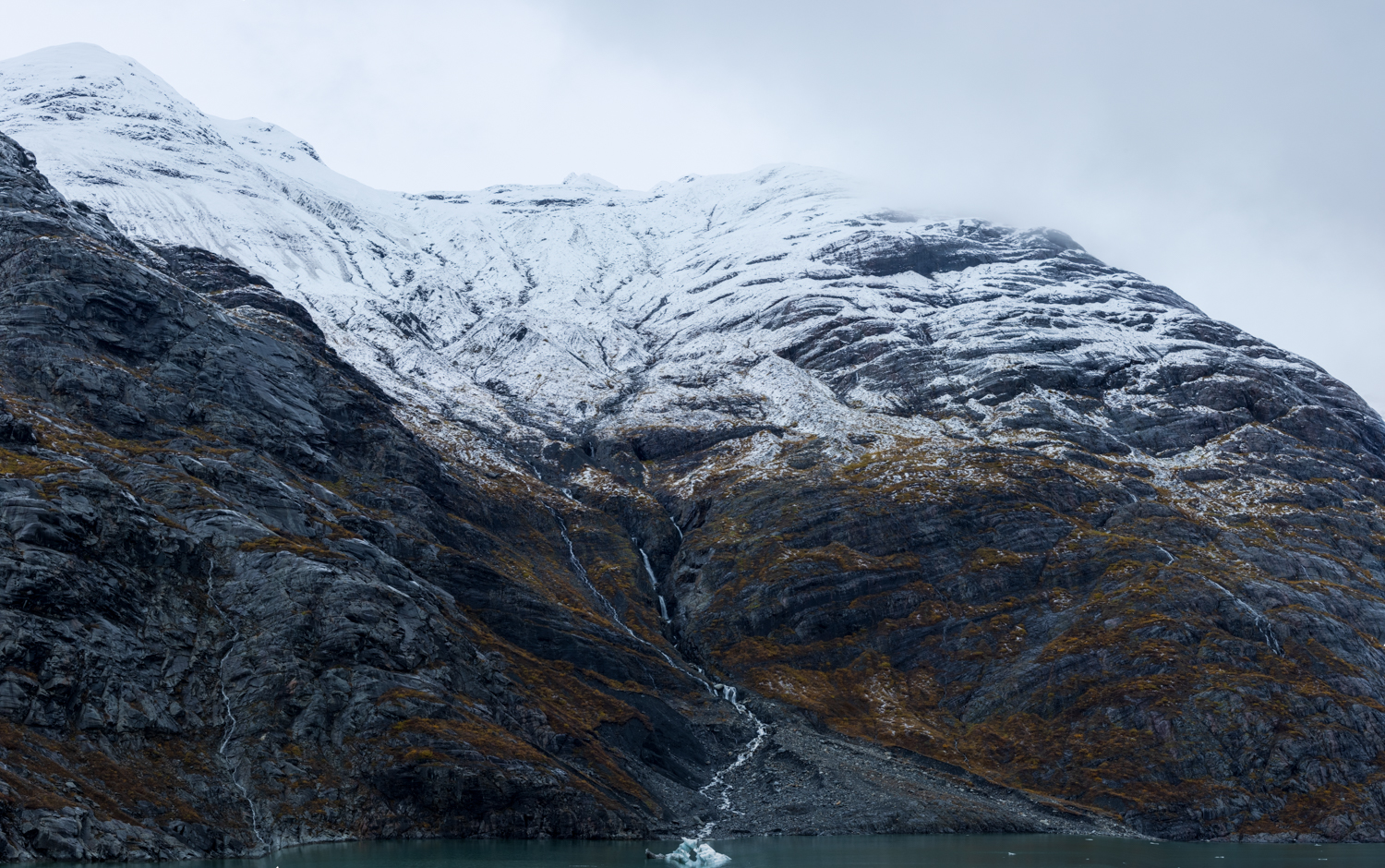
Glacier Bay
This photograph, taken deep within Glacier Bay National Park and Preserve, captures the austere beauty of Johns Hopkins Inlet—a fjord carved by ice and framed by the Fairweather Range. Sheer rock walls, streaked with autumn vegetation and crowned by fresh snow, rise from cold, green waters. A waterfall threads down the mountainside toward the inlet, its flow fed by glacial melt.
Johns Hopkins Inlet stretches nearly ten miles from its entrance to the advancing Johns Hopkins Glacier, one of the few glaciers in the park still pushing forward rather than retreating. Formed over centuries by the grinding force of ice, the inlet’s steep-sided walls expose granodiorite bedrock and layers of ancient sediment, shaped not only by glacial erosion but also by the powerful Fairweather Fault system.
In summer, this protected inlet becomes one of Southeast Alaska’s most important harbor seal nurseries—thousands gather on ice floes to give birth and raise pups in relative safety. Seabirds wheel above the turquoise water, drawn to nutrient-rich currents stirred by calving ice and meltwater upwellings. Along the shore, early successional plants like lichens, mosses, and dwarf willows cling to raw stone, slowly reclaiming land once buried under ice.
This scene reflects Glacier Bay’s essence: a living laboratory where geology, ecology, and time intersect—constantly reshaping the landscape and the life it supports.